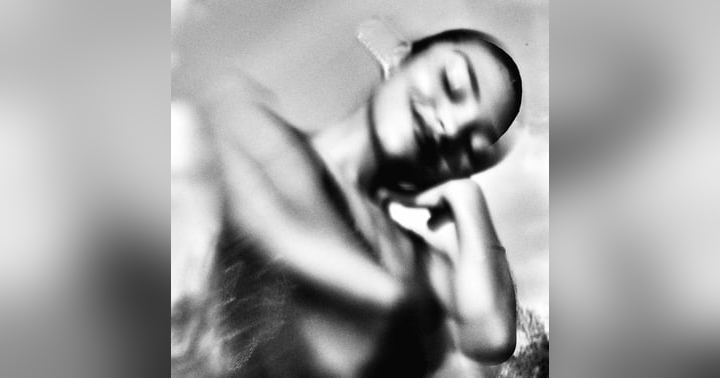Sho Madjozi: how a xibelani reshaped the centre of South African pop
People first met Sho Madjozi in "Gqi" back in 2016, and even in that brief flash of screen time the shock was immediate. Not the cheap kind of shock that comes from styling tricks or trend-chasing, but the deeper kind that happens when someone arrives already formed. Bright colours, xibelani, braids swinging, language unbent. She wasn’t performing a character. She was revealing a world that most South Africans knew only in fragments, and many outside the country had never encountered at all. The video didn’t make her. It exposed just how little space the industry had ever offered someone like her.
I was fortunate enough to be in and out of the iconic RawX Studio at the time, where she was recording a lot of her earlier work and I got to watch her sound take shape before the rest of the world was listening. When the ideas were still rough enough to scare off a safer artist. Even in those first sketches, the choices she made were already bending toward a world that didn’t ask for permission. So, when she stepped into view and fractured the centre, it wasn’t sudden. It was the public catching up to decisions she had made long before they were paying attention.
And that is where the real story begins. Sho Madjozi didn’t just enter the frame, she disrupted the frame. She challenged the idea that pop needed to smooth out its cultural textures in order to travel. From the beginning she treated Tsonga identity as complete, modern and expansive. Not folklore. Not decoration. Not a colourful addition to a pre-existing script. Her work argued that rural identity could stand at the centre of pop without shrinking itself for the room.
Visual language as argument
Looking back on it now 10 years later, what many people missed at the time was how intentional that presence already was. Before the industry tried to package her, she had already built a visual and linguistic language that refused dilution. Her colours were not an aesthetic choice; they were a declaration of lineage. Her movement was not choreography, it was inheritance. Even in those early appearances, she was mapping a path that said girls who come from where she comes from are not side characters in the national imagination. They can anchor the story. They can define the temperature of a moment. They can shift what pop understands as possible.
Clothing choices work like sentences. Maya used them to send a message: I am not an accessory to your story. The clothing, the movement, the look, the choreography—combined with voice—became a self-authored visual language. This is why when she leaned into her Tsonga signifiers it did not feel folkloric. It felt contemporary and unapologetic.
She has shown how some of her favourite xibelani skirts were gifts from her family and even her grandmother, which is to say the garment carries personal history as well as cultural weight. That history is what she brings into the stage and into the camera frame.
Cultural density: language as architecture
The most common mistake people make is to treat language in pop as only a distribution problem. If you sing in English, you will travel. If you sing in a minority language you will be niche. Sho Madjozi showed that language can be architecture. Her viral COLORS performance of “John Cena” mixes Tsonga, Swahili and English. Millions of listeners might not have understood the words, but they could feel the cadence of the delivery and the fierce confidence behind it. That performance proved that cultural density does not have to be simplified in order to be legible across borders. The audience did not come to her with a translation in hand. They came to her with attention.
For too long mainstream South African pop defaulted to a narrow set of linguistic codes. Zulu, Xhosa and Sotho have all had important moments on the national charts. Tsonga as an audible, declared home in the centre of pop was rare. Sho Madjozi’s choice to foreground Xitsonga, and to treat it as a working instrument rather than an ornament, opened up a different conversation about what "mainstream" actually looks like.
Tsonga visibility, and why it mattered
Remember this: Tsonga culture was not absent because it had nothing to say. It was absent because the channels that define modernity in South Africa tended to read certain identities as modern and others as traditional. Tsonga communities were often filmed as village representations or background local colour. An artist from Limpopo who dressed in xibelani and rapped from her own voice forced a different encounter. Suddenly the costumes associated with rural life were not props. They were the logic of the performance.
That matters for representation, but it matters more for lineage. Sho Madjozi did not approach identity as a brand add-on. Her work has always read like lineage work: lineage as inheritance and lineage as promise. By naming and carrying the xibelani in stadiums and on global platforms she re-centred the garment’s story. She has even directed a short documentary around the history of the xibelani, signalling that the skirt is part of an archive and not a gimmick. That generational claim is what gives her aesthetics weight.
Global misreadings: what the industry got wrong
The story of a talented artist joining a major label only to be urged toward “more pop,” “more English,” or “more exportable” is familiar by now. Sho Madjozi signed a deal with a major US label in 2020. I won’t speak much on the history of that relationship, but it does show a recurring problem: global industry templates often lack cultural literacy. There is a mismatch between the stakes an artist understands and the metrics a label uses. For Maya, a planned collaboration with a Tsonga musical giant had stakes that the label did not share. They could not see why a local musical lineage mattered the way she insisted it did. The result was friction, the sense of being misunderstood and sidelined. How often do global pop machines miss the cultural depth behind a project because they are searching for a version of "universal" that ends up meaning "flattened"? That mismatch is not an accident. It is structural.
This is not a finger wag toward individuals. The global machine is built to process artists into predictable templates. Sho Madjozi’s refusal to be flattened made her harder to package. And because she refused, she taught the industry a lesson it was slow to learn. Sometimes the refusal is what changes the centre.
Artistic autonomy and aftertaste
We should not romanticise the path. Standing by your instincts is not a guarantee of comfort or money. It can be costly. Sho Madjozi has been candid about the emotional toll of being told repeatedly to change the core of what makes her unique. Those are real costs. And yet her return to form, the way she staged “John Cena” on COLORS and how that viral moment became an international conversation, is proof of a wider point: specificity travels. Specificity invites curiosity. Specificity builds movement.
Her legacy is therefore twofold. On one level she expands visual and sonic possibility for future artists who come from rural places and from languages other industries have sidelined. On another level she names the limits of assimilation as a success model. You can be global without being generic. You can be whole without asking the centre to clarify its acceptance.
A last note to the reader
If you watched Sho Madjozi and felt something loosen inside you, that feeling was not accidental. You were witnessing a small rupture in a larger system. The rupture is not only that a new fashion entered stages and timelines. It is that a cultural logic shifted. When an artist from a small village in Limpopo gave us rhymes in Tsonga and Swahili and then met one of her idols on an American talk show, what you saw was not novelty. It was an argument about belonging.
Think about what it means for someone to build a world instead of waiting for permission to enter one. Think about the courage it takes to make an identity portable without thinning its meaning. That is the kind of work that alters centres.
Stories like hers are meant to open space, not close it. They invite you to imagine what becomes possible when a person chooses to stand rooted and radiant at the same time. They give us courage to embrace authenticity and in doing so, we flourish and multiply.






